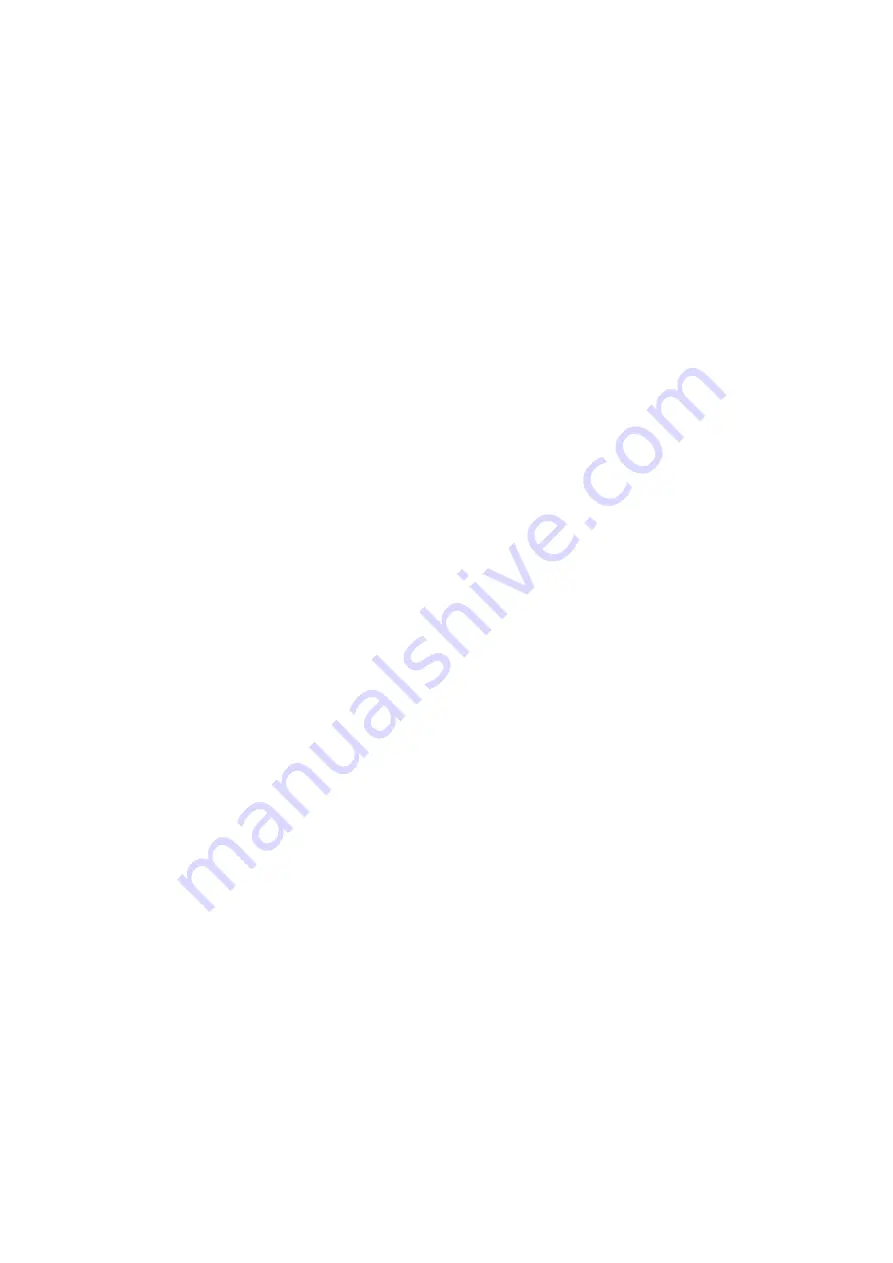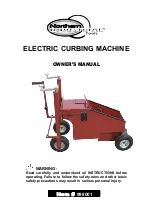
Page of 12
8
Make sure not to get the machine hung up on roots or the sod
(
See Figure E).
b. That he keeps the curb machine level by constant observation of the Leveler (4) (See
Figure E).
c. That he keeps the Slip Form (1A, 1B, 1C) at the proper height (See Figure E).
Feeding the Hopper:
·
It is not necessary or advisable to completely fill the Hopper with concrete. It is most efficient to
tap the bottom of the Hopper with a shovel at the end of the Compaction Ram (64) stroke to
keep the curb machine moving. If the machine extrudes at every stroke, it can produce over 500
feet per hour.
·
It is not recommended to use a small mouth shovel to stamp down the concrete, as it could
become jammed by the Compaction Ram (64) resulting in damage to the Gear Box or Drive
Arm.
Hand Troweling:
·
The concrete finishing work should be performed before the concrete begins to dry or set up.
·
All of the curbing should be hand troweled as soon as possible after the curb is laid. You should
go over each section lightly at least once, but do not over trowel.
·
Some areas, especially tight curves and circles, will leave cracks in the surface which can be
filled and finished with a finishing hand trowel. On tight circles, a slightly wetter mix will help
alleviate some of the cracking.
·
When finishing the work, keep firm but light pressure on the rear of the finishing hand trowel so
that it does not gouge the concrete.
Installing Curbing in a Straight Line:
1. Mark the installation with a string line set 1/4 inch from the desired curb edge.
2. Run the curb machine with the left side (the “straight” side) along the string.
3. After the section has been extruded, remove the string and place it in line directly over the
curb. Portions which are still not straight can be pushed into place with the back of a
shovel.
Installing Curved Curbing:
·
It is important for the control of the curb machine, as well as for the protection of the landscape,
that you do not make curves too tight. Gentle curves look best, and will allow you to be more
efficient with the curb machine.
·
If you have a tight curve or circle, make sure to allow for the curb machine to operate properly
by digging the trench a little wider. The extra clearance will allow the Slip Form (1A, 1B, 1C) to
make it around the curve (See Figure G).
Installing Circles:
1. The most critical part of a circle is a good radius or trench.
2. Pull a string line from the center point of the circle, and mark the outside of the circle with
spray paint or chalk.
3. Dig the trench, and place the curb machine in the circle.
4. As the concrete is extruded, help pull the curb machine around the circle so the back of the
Slip Form (1A, 1B, 1C) doesn’t catch on the sod. Most circles smaller than 6 feet in diameter
will “break up” as you drive the machine.
5. As you reach the end of the circle, move the Rear Pneumatic Tires (9) more towards the
middle of the circle and you will be able to extrude the concrete almost on top of the
beginning of the circle. You may wish to cut off and remove the first foot or two of curbing,
as it is likely the machine will move inward as you follow this process. As you trowel the
outside of the circle, use your hand on the inside to keep the concrete together. Then, finish












